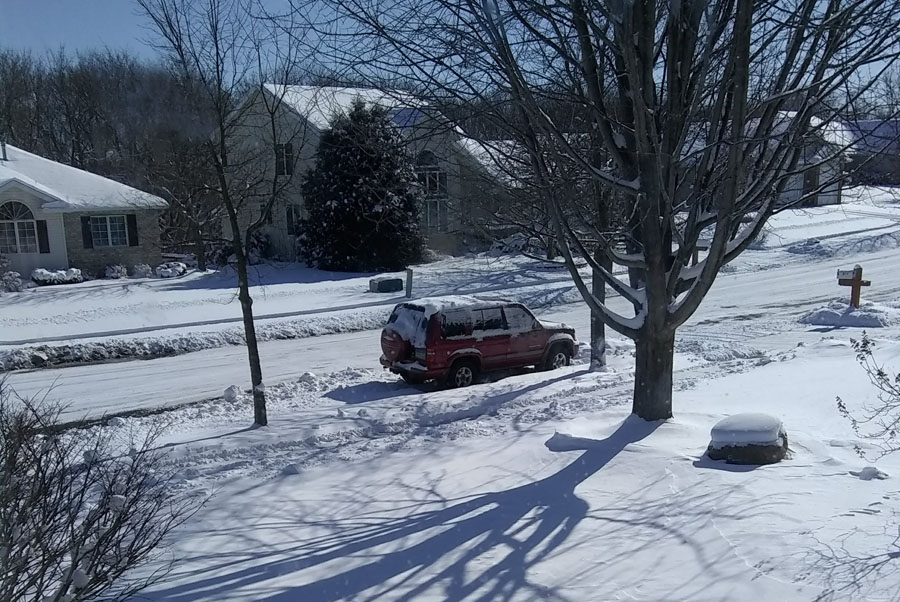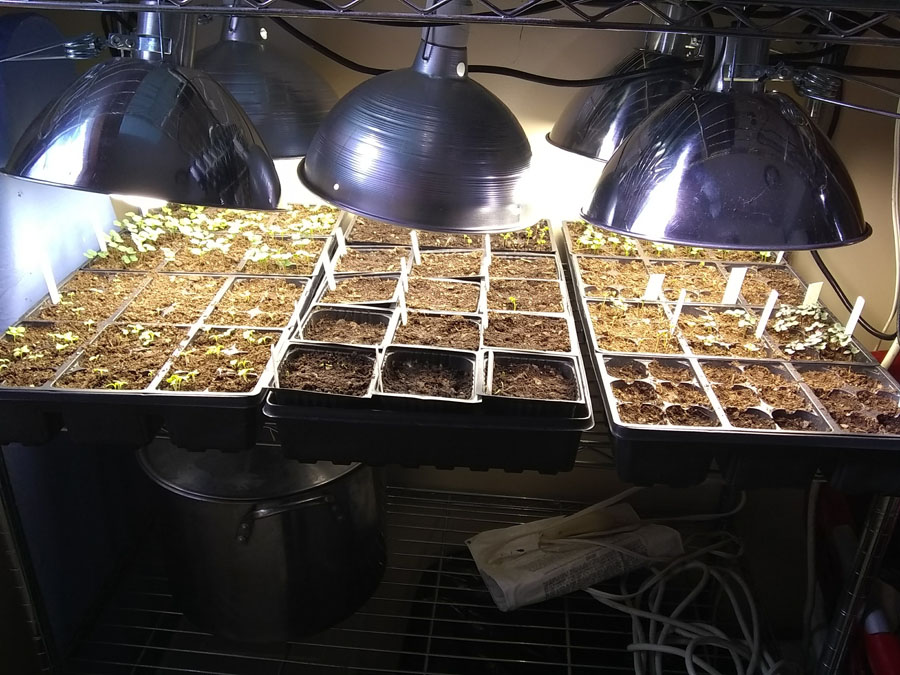By Matt
So we were socked with a late winter storm that dumped six inches of snow on April 3. The week before the temperatures had reached 50 degrees and all the snow had melted. Now look what it looks like outside. On top of that the temperatures dropped into the teens and will stay below freezing for a whole week.
While this does not bode well for starting the garden any time soon, we did want to get a jump on planting some cool weather crops as soon as the temperatures return to normal and the chance of deep frosts pass. Since we are aiming to get some plants in raised beds under row cover we started some indoor seedlings of cool weather crops that transplant well. These include lettuce, cabbage, kohlrabi and kale. These were started on March 28th with a target date of May 1 (4 weeks) for planting. Our setup utilizes Philips 100-Watt Equivalent T2 Twister compact fluorescent light bulbs with twin-socket lamp holder adapters in an aluminum clamp shield. Each light bulb produces 1600 lumens with 6500K spectrum light. The 6500K spectrum light is best for growing plants as it most closely resembles outdoor light. Its important to place the lights as close to the seedlings as possible when they break the surface of the soil so they don’t try and stretch to the light resulting in leggy seedlings. After they shoots are thinned to 1 or 2 seedlings per cell, and the seedlings have put on 2-3 true leaves then the lights can be put at a further distance to cover more area.
I followed the recommendations of Gary Pilarchik of The Rusted Garden and his extensive indoor seed planting guides including “A Comprehensive Guide to Indoor Seed Starting 24 Vegetables & Herbs”
Most Importantly.
1) Use a soil free mix such as seed starter or potting soil
2) Add boiling water to prewet the mix. This kills any pests and makes soil easier to handle and increases its ability to take up water evenly later.
3) Put soil in cells and thumb pack it down, repeat as necessary to fill cell. This gives seedlings a firm base to put roots through and when the seedling is ready for transplantation yields a soil/seedling that does not fall apart when removed.
4) Only water seed tray from the bottom. Seedlings therefore are not disturbed.

